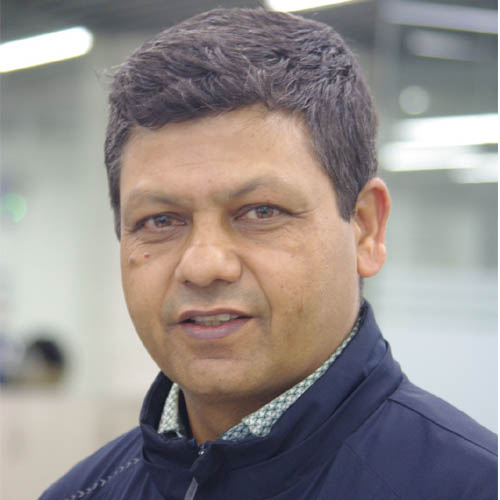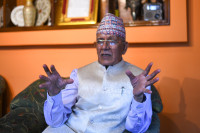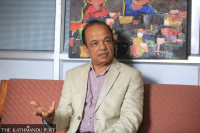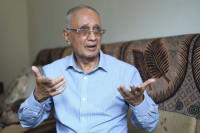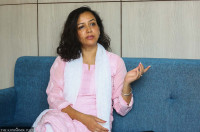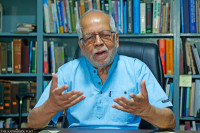Interviews
Constitution has good provisions on election system, only laws need change
It’s high time we adopted an early voting system for those staying outside their constituencies.
Thira Lal Bhusal
Nepal’s two largest political parties—the Nepali Congress and the CPN-UML—that together run the government have floated the idea of reforming the election system. In this interview, the Post’s Thira Lal Bhusal asked Chief Election Commissioner Dinesh Kumar Thapaliya if the country’s electoral system really needs reforms.
Does our electoral model really have serious problems?
Around 11 types of electoral systems are practiced around the world. India only has the first-past-the-post (FPTP) system. We also practiced the same until 2008, except for the electoral college model adopted to elect National Assembly members. Now we have the proportional representation (PR) category as well.
I hear leaders give three reasons to justify the need for changes in the election system. First, they say the present system is costly. No system is inherently costly or cheap, or stable or unstable. After the restoration of multiparty democracy in 1990, we conducted five elections—three general elections and two local polls—under the FPTP system. It was not considered costly at the time. It was not considered costly even in 2008. Surprisingly, they are now finding the same system expensive. If it has become costly, who made it? There is no point in blaming the system.
What do the Election Commission’s data say?
Election expenses should be viewed from three perspectives—the Election Commission’s expenditures to conduct the polls; the cost to mobilise security forces; and the expenses made by political parties and candidates. The politicians resort to even unhealthy activities to win elections but then blame the system. If political parties or candidates spend big to influence voters, that is their problem, not the system’s fault. The commission’s expenses on elections have in fact decreased in recent elections. There is room for further cuts. For instance, in the present system we use different ballot papers to elect members under the FPTP and PR categories from the same constituency. We can convert the votes secured by FPTP candidates of the respective parties from across the country into the PR votes and allocate the seats under the PR category. This can drastically reduce election expenses. This is just an example of how we can reduce election expenses within this system.
The electoral system is blamed for political instability. But our history doesn’t show that the country faced instability due to lack of a single-party majority. It rather shows that a government can’t necessarily serve a full term even if a single party has a majority in Parliament. These are the political parties and the leaders who adopted this mixed electoral system while promulgating the constitution in 2015 after long and rigorous discussions. How can they advocate for change in the system while there is no drastic change in our political scenario? For instance, in Switzerland, coalitions serve full terms and the system is working efficiently there. So, political stability largely depends on the political culture and working style of the parties and their leaders. Electoral system isn’t fixed, but any change should be based on proper study and stand on strong ground.
Some international experts including those from India often appreciate features of Nepal’s election system. You often interact with the international community. What kind of impression do they have of our system?
Chief Election Commissioner of India Rajiv Kumar, who retired from the post a few weeks ago, was impressed by our system. He frequently observed our elections and is familiar with our system. He told me that he was impressed, one, by the way we conducted polls across the country simultaneously, and they want to replicate it. They have an easier system as they don’t need an additional ballot box for the PR category.

Likewise, two, they are impressed by our women’s representation. I was in India to attend a conference in January. At the time, he informed me that they have recommended the Indian government to include these two features as the Indian government is preparing to adopt the ‘One nation, one election’ policy, which envisions holding both federal and state elections across the country on the same day. He appreciated Nepal’s mandatory provision of 33 percent women representation. Unfortunately, we haven’t been able to use such a system properly.
What improvements does our electoral system need?
The fundamental principles of our mixed electoral system stated in our constitution are essentially right. With legal reforms, we can do away with unhealthy election practices and make the process transparent and accessible for the common people. Thus we can address at least 80 percent of the election-related issues under the present system. Our laws aren’t as liberal as our constitution. For instance, the spirit of the constitution is to ensure women representation mainly from the FPTP category but in practice it is managed largely through the PR seats. Our constitution states that a lawmaker elected from a political party loses his/her position once the person quits the party. But the Political Party Act-2017 states that they retain the position if a group of lawmakers who quit the party have the parting threshold fixed in the Act. Similarly, an individual, who is elected independently, later joins a political party. This is against the spirit of the constitution and people’s mandate. These anomalies should be addressed in the law.
The constitution has stated that all committees of a political party must be elected. But the law included a provision of nomination even as the statute has not envisioned nomination of office bearers in Nepal’s political parties. Citing the same legal provision, party cadres give the entire authority to form committees to the party bosses who then nominates members loyal to him/her. Political parties are misusing legal loopholes. How can democracy take root in a country where political forces flout democratic values and constitutional norms?
We can transfer the authority of registering voters to the respective local units. District administration can cross-check it afterward. The local authorities themselves can decide several matters such as where and how to conduct polls based on their ground reality. The centralised practices such as the Election Commission supplying all the materials from Kathmandu and parties selecting candidates from the centre need to be decentralised. Conducting primaries and giving more authority to the local committees to select their candidates can be an option. In sum, the activities of political parties, election commission and state agencies are too centralised. This should be changed through legal reforms.
Another equally important aspect is financial transparency of politicians and their parties. These days, almost all political parties are running weeks or months-long nationwide campaigns. They convene huge meetings and conferences. Buses of cadres gather and scores of leaders travel in planes and stay in hotels. Everyone knows that our politicians’ campaign financing is exorbitant. Where does the money come from? These things should be transparent. This is vital because non-transparent parties and leaders can’t ensure good governance.
It’s high time to have an early voting system for those staying outside their local units or districts but inside the country. At least allow them to cast PR ballots. For that, they have to enlist their names at the local booths where they are staying at the time. This can be done through legal arrangements. This will significantly increase people’s participation in and ownership of elections. This provision can then be gradually expanded to cover Nepalis staying abroad.
Political parties submit their expenditures annually and candidates give details of their election expenses post elections. How realistic are these reports and how effective is this system of voluntary declaration?
The political parties submit their yearly expenditure details. They also submit election expenditures; the commission has fixed ceilings based on the positions contested. The parties submit reports with a signature of the party’s chief and a registered audit that states that the details are factual. How can you imagine a party chief, for example Sher Bahadur Deuba, KP Sharma Oli, Pushpa Kamal Dahal or Madhav Kumar Nepal submitting a false report to the constitutional body? But such reports and details are often questioned publicly. So these need to be addressed and made credible.
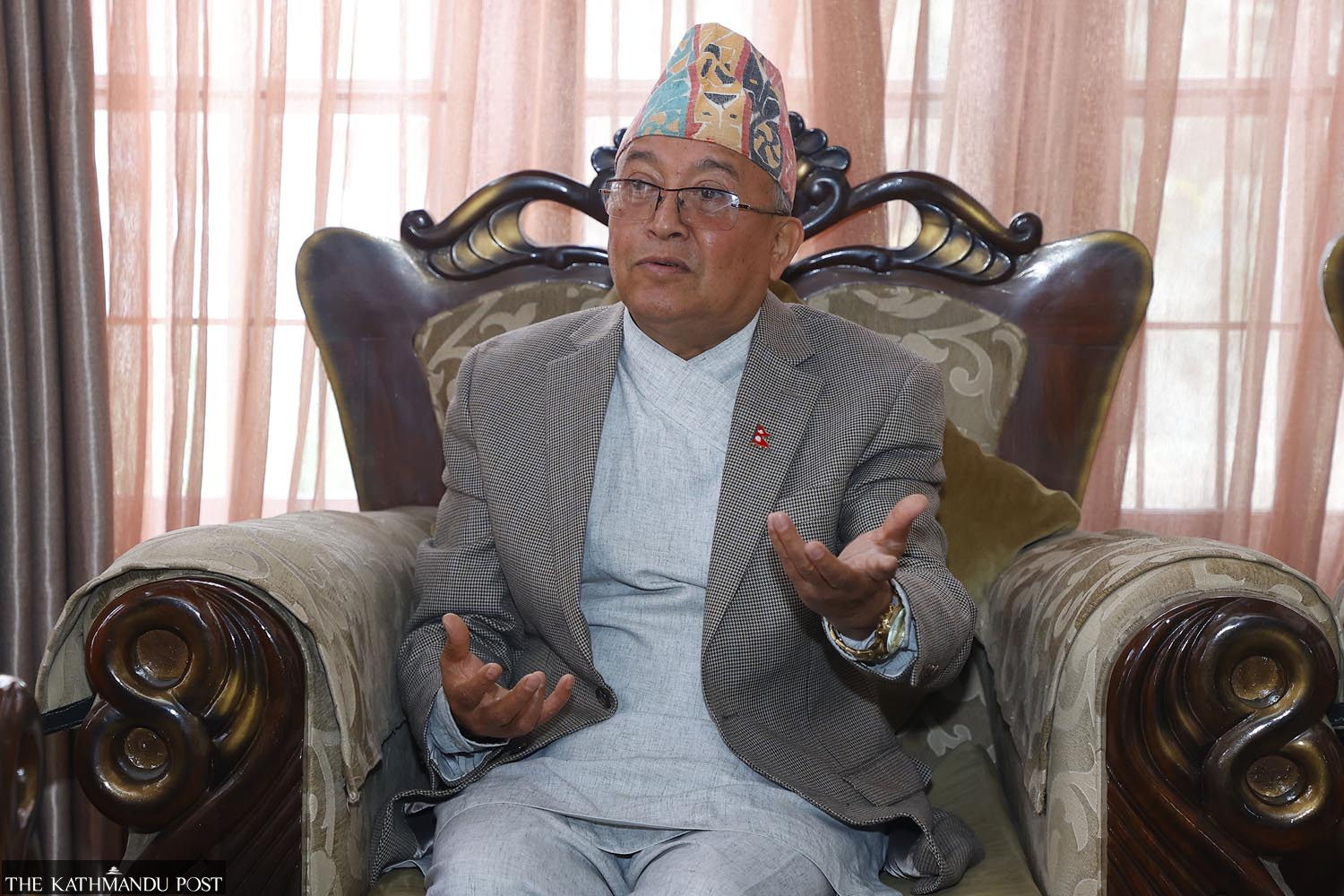
For that, we have started discussions on a couple of options such as state funding for political parties, allowing the Auditor General to audit their expenditures, and projection of incomes and expenditures for the upcoming year and quarterly reports. The candidates should do the same. They have to declare their sources in advance and make transactions through banks. Also, we have proposed a social audit that makes it mandatory for a candidate to make public their election expenses and sources of money received, among other details, amid a public gathering in their constituency within 35 days of election. This is how we can control a lot of unhealthy practices.
The idea of state funding for political parties has been in debate of late. But what if the parties collect donations even after obtaining funds from state coffers? How can it be checked?
With the implementation of the state funding, other donations should be abolished. We can categorise the political parties based on their strength. National political parties will be funded by the federal government while provincial and local parties get funds from the respective governments, where they are represented. The state can call upon business people to contribute to the fund created by the state for the purpose.
For instance, if a business person has been providing Rs10 million to one or two parties, it can give the same money to the state’s fund. The government distributes the money to political parties based on their strength. The businesses can provide the money under their Corporate Social Responsibility and can also get tax waivers. They can proudly announce their contribution to the state’s election fund. This is how we can make election funding transparent. We definitely need more debates and study before finalising a modality that suits us.
Where are we in terms of using technology in elections and is the commission working to adopt new technology?
We are weak in technology. At times, our commission used to be considered ahead in this connection. We lack advanced technology and knowledge. There is also no situation where all stakeholders can be assured of full-proof elections completely based on technology. Moreover, new threats such as cyber security have added to the challenge. More importantly, political parties aren’t ready to conduct completely technology-based elections. What we can plan is a hybrid system in which voters cast votes on ballot papers and subsequently drop them in a machine that scans and counts the votes immediately. Paper ballot is referred only if there is a dispute on digital counting. In this system, voters need to tick a box with a pen and for that we need a special machine-readable ink. We can pull this off with some homework.




 17.62°C Kathmandu
17.62°C Kathmandu